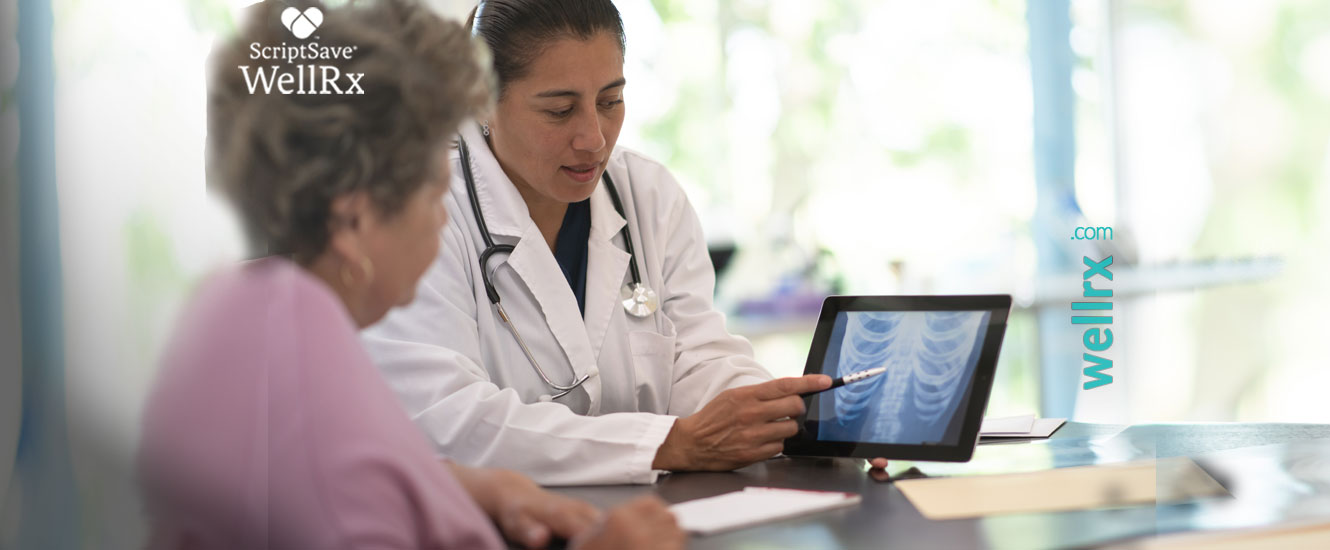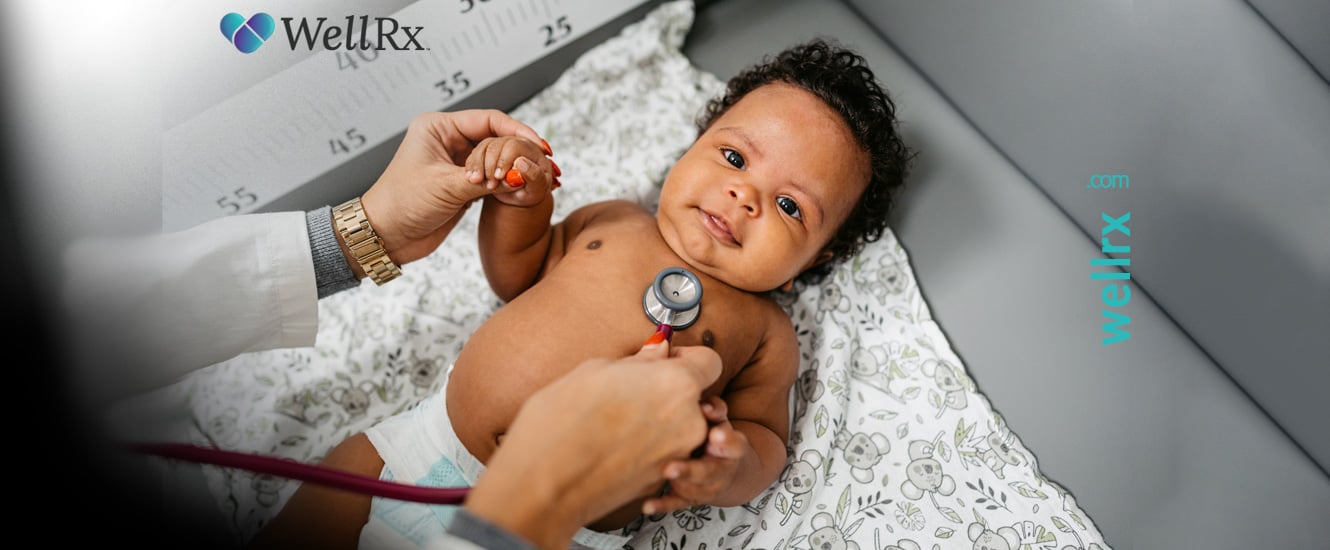Osteopenia and osteoporosis are two very common medical conditions, with osteopenia affecting around 34 million Americans and osteoporosis affecting about 54 million Americans. Receiving a diagnosis of either condition can feel concerning. Read this article to learn about each condition and how to manage them to live a long, strong, and healthy life.
Osteopenia vs. osteoporosis: how do they compare?
Osteopenia is a condition that often precedes osteoporosis, meaning that it can often be diagnosed before a diagnosis of osteoporosis is given. If osteopenia worsens, it turns into osteoporosis. Osteopenia refers to the weakening of one’s bones that leads to a loss of bone mineral density (BMD).
If you have a smaller amount of minerals in your bones, like calcium, the bones can become weaker and be more susceptible to breaking. This is important, as brittle and/or weak bones and an increased risk of fracture can be very dangerous for elderly people or people who may not recover as easily from fractures. Women are considered to be at a higher risk for both osteoporosis and osteopenia than men.
To determine if you have osteopenia, a dual-energy x-ray absorptiometry (DEXA) scan is performed by a qualified healthcare practitioner. This painless scan measures how much mineral is present in the bone. The measurements are reported as a metric known as a “T-score,” which is then categorized by a healthcare provider.
If your T-score is within -1 to -2.5, it is considered to be indicative of osteopenia. The lower the score, the fewer minerals there are in the bone, or the more severe the osteopenia is considered to be. Scores below -2.5 are considered to be indicative of osteoporosis.
Osteoporosis literally translates to “porous bones,” meaning that the bones have holes due to a lack of minerals. This condition is more severe than osteopenia, meaning that even fewer minerals are present in the bone. This makes the bones very weak, increasing one’s risk of breaking bones or having fractures.
Similarly to osteopenia, osteoporosis is typically diagnosed using a DEXA scan. It can be tricky to diagnose because, typically, people do not experience symptoms when they have osteoporosis. If anything, people may notice a loss of height, a change in their posture, an increased frequency of bone fractures, and/or pain in the low back.
Once a woman reaches the age of 65 and a man reaches 70, they should typically get a DEXA scan. However, osteopenia and osteoporosis can develop earlier and should be discussed with your healthcare provider for a more proactive approach.
What causes osteopenia and osteoporosis?
An individual may develop osteopenia or osteoporosis for many reasons, the most common being things that disrupt and/or affect bone density, including:
- Age: As you age, you naturally lose bone density. This is because you start to break down bone rather than build bone as part of the natural aging process. Depending on genetics, the rate at which you may lose bone is largely hereditary or based on your genes.
- Diet: Certain dietary factors can contribute to bone loss and, thus, the development of osteoporosis and/or osteopenia. For example, not getting enough calcium can weaken the bones, as calcium is one of the main nutrients needed to preserve bone strength. Good sources of calcium include dairy-based foods, fortified foods, leafy greens, and tofu. In addition, if you are undernourished or have a history of disordered eating, your risk for porous bones can increase due to longer-term nutrient deficiencies. Lastly, if vitamin D levels are suboptimal, you can have an increased risk of bone density loss due to vitamin D’s role in assisting calcium absorption within the bone. Foods that are good sources of vitamin D include eggs, meat, and fatty fish like salmon. Many individuals need to supplement with vitamin D to help reach optimal levels.
- Medications: Some medications can affect one’s risk of osteopenia and/or osteoporosis due to reducing bone density and bone formation. Some of these medications include steroids and medications used for some kinds of cancer treatments.
- Irregular menstruation: Women who have irregular cycles may be at a higher risk of osteopenia or osteoporosis because a regular menstrual cycle helps manage estrogen levels in the body. If you are not having a regular period, you are not releasing estrogen as optimally as you could be, which can reduce bone density.
- Medical conditions: Certain medical conditions, such as thyroid irregularities and/or some diseases like kidney disease, can affect bone density since they affect nutrient absorption in the body.
- Smoking: Smoking can reduce bone density by stripping the bone’s ability to maximize nutrients. It also can cause women to enter menopause sooner than they otherwise may have, affecting their hormone and estrogen levels.
While this is not an exhaustive list of reasons why someone may be at a higher risk of osteopenia and osteoporosis, they are some of the most common culprits.
What are the preventative measures against osteopenia and osteoporosis?
You should consider many options when talking about how to prevent the development of osteopenia and osteoporosis. All of these preventative measures lie at the root of preventing bone mineral loss. Some measures to focus on include:
- Diet: Having a healthy, balanced diet that is consistent will help prevent against loss of mineral content in the bones. Just as diet can be one of the top causes of developing porous bones, it can also be one of the most helpful tools. Eating enough calcium, getting enough vitamin D, and ensuring that you are fueling your body adequately in overall calories can be very helpful for the prevention of porous bones.
- Exercise: Trying to incorporate daily movement into your life can help prevent osteoporosis and osteopenia. Particularly, engaging in weight-bearing types of movement is effective, as it helps to put good stress on the bones and preserve strength and integrity. Some forms of effective weight-bearing types of exercise can include walking, weight-lifting, and Pilates.
Overall, prevention boils down to trying to maintain a healthy, balanced lifestyle with both diet and movement.
How to treat osteopenia and osteoporosis
If you have been given a diagnosis of either osteopenia and/or osteoporosis, it can be worrisome. The good news is that many treatments can help you live a long, healthy, and strong life with these conditions.
For osteopenia, treatment often begins by examining your diet and lifestyle. If your practitioner identifies that you are deficient in calcium and/or vitamin D, they may suggest supplementation to help correct any deficiencies that may exist. As a general rule of thumb, trying to get around 1200 milligrams of calcium daily and around 800-1000 International Units of vitamin D daily is a helpful starting point. Additionally, limiting alcohol and avoiding smoking is also helpful.
Next, a healthcare practitioner may talk with you about your movement routine. Trying to get some form of exercise daily is very important. If this feels overwhelming, start small. Use these tips to try to incorporate more movement into your day-to-day:
- Walk to/from a place you already need to be. If you can walk to the grocery store, run an errand, or home from work, try adding more walking in your day-to-day.
- Take 10-minute mental health walks. If you are someone who has a busy work schedule, try to carve out 3-4 10-minute increments in your day to take a brain break and go for a walk. Even if it is around the office, stepping outside, or going up and down the stairs, your body and brain will thank you.
- Take an inventory of your exercise completed and challenge yourself to try something new. If you are intrigued by a strength training class, Pilates class, or treadmill class, challenge yourself to try it. You are only new at something once.
While movement will not cure osteopenia, it is essential for living with either condition and maximizing health and longevity.
For osteoporosis, the treatment also includes diet and exercise but typically medications as well. Several types of medications can be used, including hormone replacement, bisphosphonates (drugs that help with preserving bone tissue), biologics (drugs that help stop the bone from removing cells), and anabolic agents (drugs that help the body build bone).
Overall, hearing that you have osteopenia and/or osteoporosis can feel disheartening. Not to worry—you can take steps to help strengthen your body and your bones so that you feel strong for many years to come. If you know that you may be at a higher risk for developing one of these conditions, it is never too late to start prioritizing your bone health.
Jordan Stachel holds a Master’s degree in Nutrition and Dietetics from The University of Southern California and is a Registered Dietitian Nutritionist. She has several years of experience helping clients reach their health goals through her clinical work within private practice. Jordan is most fulfilled when guiding others towards making stepwise, sustainable changes that add up to big results over time. Jordan works with a wide variety of individuals, ranging in age from children through the elderly, with an assortment of concerns and clinical conditions. She helps individuals optimize overall health and/or manage disease states using personalized medical nutrition therapy techniques.
References:
- https://my.clevelandclinic.org/health/diseases/21855-osteopenia
- https://my.clevelandclinic.org/health/diseases/4443-osteoporosis
- https://www.health.harvard.edu/womens-health/osteopenia-when-you-have-weak-bones-but-not-osteoporosis
- https://www.jeanhailes.org.au/health-a-z/bone-health/causes-of-osteoporosis-osteopenia













 Store & manage your medication list
Store & manage your medication list Medication pricing updates
Medication pricing updates Pill & refill reminders
Pill & refill reminders Medication journal & mood log
Medication journal & mood log